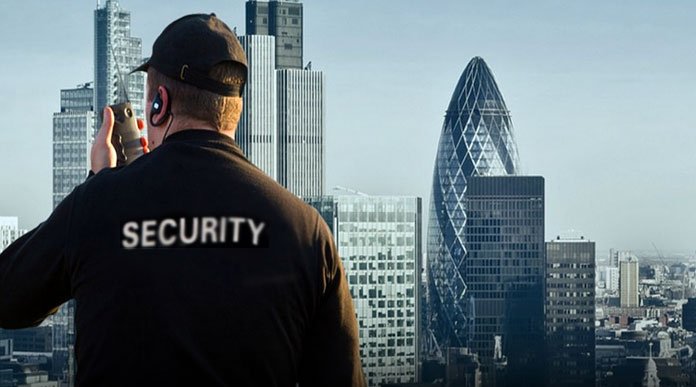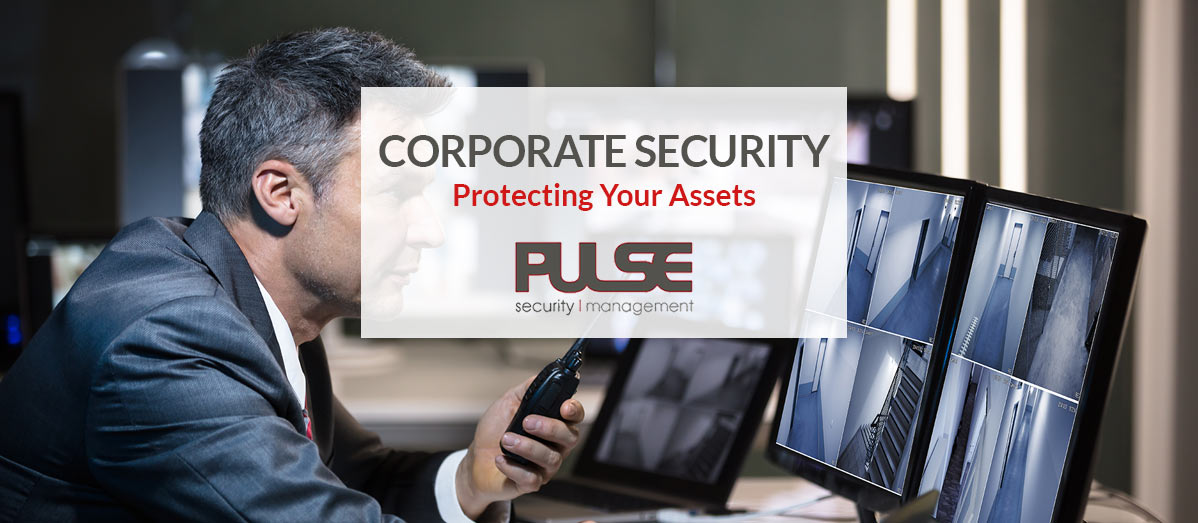Mastering Corporate Security: Proven Techniques for Business Defense
Mastering Corporate Security: Proven Techniques for Business Defense
Blog Article
From Cybersecurity to Physical Steps: Reinforcing Company Safety in an Altering Globe
By combining the toughness of both cybersecurity and physical security, business can produce an extensive protection approach that attends to the diverse array of threats they encounter. In this discussion, we will certainly explore the changing hazard landscape, the requirement to integrate cybersecurity and physical safety, the application of multi-factor verification actions, the significance of staff member recognition and training, and the adaptation of protection actions for remote labor forces. By examining these key areas, we will certainly obtain valuable insights into exactly how companies can strengthen their corporate safety and security in an ever-changing globe.
Comprehending the Transforming Danger Landscape
The evolving nature of the contemporary world requires a thorough understanding of the transforming hazard landscape for efficient company protection. In today's interconnected and electronic age, risks to company safety have actually ended up being extra complex and advanced. As innovation advancements and companies become progressively reliant on digital facilities, the potential for cyberattacks, information violations, and other protection violations has actually dramatically increased. It is essential for organizations to stay informed and adjust their security determines to address these advancing dangers.
One secret facet of understanding the transforming risk landscape is identifying the various sorts of threats that companies deal with. Cybercriminals are continuously creating brand-new strategies to exploit vulnerabilities in computer system systems and networks. These hazards can vary from malware and ransomware assaults to phishing scams and social engineering techniques. In addition, physical risks such as burglary, criminal damage, and company espionage remain prevalent worries for businesses.
Tracking and evaluating the hazard landscape is crucial in order to identify potential threats and vulnerabilities. This entails staying updated on the most current cybersecurity trends, examining risk intelligence reports, and performing routine threat analyses. By understanding the transforming hazard landscape, companies can proactively implement suitable protection procedures to alleviate threats and secure their possessions, credibility, and stakeholders.
Integrating Cybersecurity and Physical Security
Integrating cybersecurity and physical protection is crucial for extensive business security in today's digital and interconnected landscape. As companies increasingly count on innovation and interconnected systems, the borders between physical and cyber threats are coming to be blurred. To successfully guard versus these risks, an all natural technique that integrates both cybersecurity and physical security steps is necessary.
Cybersecurity concentrates on protecting digital assets, such as networks, data, and systems, from unapproved access, disturbance, and burglary. Physical safety and security, on the other hand, incorporates procedures to safeguard physical possessions, individuals, and centers from susceptabilities and risks. By incorporating these two domain names, organizations can deal with susceptabilities and dangers from both physical and electronic angles, therefore boosting their total safety and security posture.
The combination of these 2 self-controls permits for an extra thorough understanding of safety threats and makes it possible for a unified feedback to events. For instance, physical accessibility controls can be enhanced by integrating them with cybersecurity methods, such as two-factor authentication or biometric identification. Similarly, cybersecurity steps can be enhanced by physical safety steps, such as monitoring cams, alarms, and protected access factors.

Executing Multi-Factor Verification Procedures
As organizations increasingly focus on extensive protection procedures, one reliable strategy is the application of multi-factor authentication measures. Multi-factor verification (MFA) is a security approach that calls for customers to supply several forms of recognition to access a system or application. This technique adds an additional layer of protection by combining something the user understands, such as a password, with something they have, like a finger print or a safety and security token.
By executing MFA, organizations can dramatically improve their security position - corporate security. Typical password-based authentication has its restrictions, as passwords can be conveniently endangered or failed to remember. MFA reduces these risks by adding an additional verification factor, making it more hard for unauthorized individuals to acquire access to sensitive details
There are numerous kinds of multi-factor authentication approaches available, consisting of biometric verification, SMS-based confirmation codes, and hardware tokens. Organizations require to examine their particular needs and pick the most appropriate MFA service for their demands.
However, the implementation of MFA should be carefully planned and performed. It is important to strike a balance in between security and functionality to avoid user aggravation and resistance. Organizations ought to also take into consideration possible compatibility problems and give sufficient training and assistance to ensure a smooth change.
Enhancing Worker Awareness and Training
To reinforce corporate safety, companies must prioritize improving worker recognition and training. In today's swiftly evolving risk landscape, staff members play a crucial duty in securing an organization's sensitive information and assets. Lots of protection breaches occur due from this source to human mistake or absence of recognition. Therefore, organizations need to spend in thorough training programs to educate their staff members regarding potential threats and the ideal techniques for minimizing them.
Efficient staff member recognition and training programs ought to cover a large range of subjects, advice including data protection, phishing strikes, social design, password hygiene, and physical safety and security measures. These programs need to be tailored to the certain demands and duties of various staff member roles within the company. Regular training simulations, workshops, and sessions can help workers develop the necessary skills and knowledge to respond and identify to safety and security threats efficiently.
Additionally, companies ought to urge a culture of protection recognition and supply continuous updates and tips to keep staff members informed regarding the most recent risks and reduction techniques. This can be done via interior communication channels, such as e-newsletters, intranet portals, and email projects. By cultivating a security-conscious labor force, organizations can significantly decrease the possibility of safety events and protect their important properties from unauthorized accessibility or concession.

Adapting Protection Procedures for Remote Labor Force
Adapting company safety and security steps to suit a remote labor force is crucial in making sure the defense of sensitive information and possessions (corporate security). With the enhancing pattern of remote work, companies must implement suitable security procedures to minimize the risks related to this brand-new way of working
One important element of adapting security measures for remote browse this site job is establishing safe and secure communication networks. Encrypted messaging platforms and virtual personal networks (VPNs) can assist secure sensitive details and avoid unapproved access. Furthermore, companies must apply the use of strong passwords and multi-factor verification to enhance the security of remote accessibility.
An additional vital factor to consider is the execution of secure remote access options. This entails giving employees with secure accessibility to corporate resources and information through online desktop computer framework (VDI), remote desktop computer methods (RDP), or cloud-based solutions. These innovations make sure that sensitive information stays secured while enabling employees to do their roles properly.

Last but not least, comprehensive security awareness training is critical for remote employees. Training sessions should cover best practices for safely accessing and taking care of delicate info, determining and reporting phishing attempts, and maintaining the general cybersecurity hygiene.
Verdict
In conclusion, as the hazard landscape proceeds to evolve, it is important for companies to enhance their safety and security measures both in the cyber and physical domain names. Integrating cybersecurity and physical security, applying multi-factor authentication steps, and improving employee recognition and training are crucial steps in the direction of attaining robust company security. Furthermore, adapting security procedures to fit remote workforces is essential in today's altering globe. By implementing these measures, companies can mitigate risks and secure their beneficial possessions from possible hazards.
In this discussion, we will certainly explore the changing hazard landscape, the need to incorporate cybersecurity and physical safety, the application of multi-factor verification measures, the relevance of staff member awareness and training, and the adjustment of safety and security actions for remote workforces. Cybersecurity measures can be complemented by physical security steps, such as surveillance electronic cameras, alarm systems, and protected gain access to factors.
As organizations significantly focus on extensive security procedures, one efficient method is the execution of multi-factor verification measures.In verdict, as the risk landscape proceeds to evolve, it is essential for companies to enhance their security gauges both in the cyber and physical domain names. Incorporating cybersecurity and physical protection, executing multi-factor verification actions, and enhancing staff member recognition and training are important steps towards accomplishing durable business protection.
Report this page